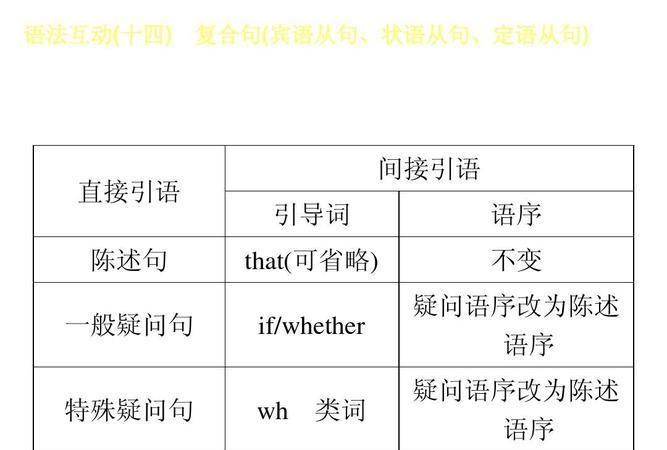状语从句和宾语从句在英语语法中有不同的作用和使用方式。状语从句修饰主句中的动词、形容词或副词,通常由连词如when,if,as,since等引导,而宾语从句作为主句的宾语,通常由that,whether,if等引导。状语从句通常可以省略主语,而宾语从句通常不能省略主语。理解这两者的区别有助于更准确地使用英语。

状语从句
状语从句是一个从句,它用来修饰主句中的动词,形容词或副词。它可以回答“什么时候?”,“为什么?”,“在什么情况下?”等问题。状语从句通常由连词引导,例如when,if,as,since等。
以下是一些状语从句的例子:
- When I arrived at the station, the train had already left.
- If it rains tomorrow, we'll stay at home.
- As he was driving home, he saw a strange light in the sky.
- Since she moved to the city, her life has become more exciting.
宾语从句
宾语从句是一个从句,它在句子中作为主句的宾语。它通常回答“我想知道什么?”,“我相信什么?”等问题。宾语从句通常由连词引导,例如that,whether,if等。
以下是一些宾语从句的例子:
- I know that you are busy.
- He asked whether we could help him.
- She wonders if she should accept the job offer.
- They don't know if they will be able to come to the party.
区别
状语从句和宾语从句的最大区别在于它们在句子中的作用。状语从句用来修饰主句中的动词,形容词或副词,而宾语从句作为主句的宾语。此外,状语从句通常由连词引导,而宾语从句通常由that,whether,if等引导。
另外,状语从句通常可以省略主语,而宾语从句通常不能省略主语。

